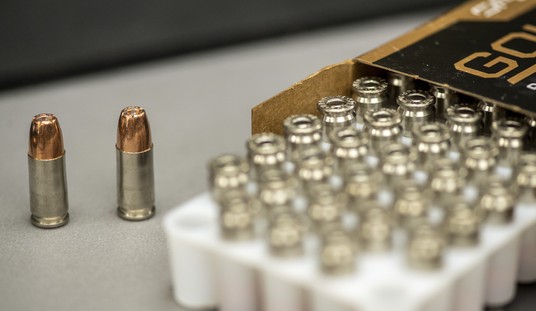For better or worse, law enforcement is always going to be linked to the Second Amendment, despite the fact that no one likely planned for them to be. The police probably didn’t. However, good policing and low crime mean less call for us to need our gun rights to keep us alive. Poor policing makes our gun rights all the more important.
I mean, if criminals are arrested and in jail, they’re not exactly going to break into my house at two in the morning, now are they?
Here in the United States, our police are different than in many places. For one thing, they’re armed at all times. That’s not the case in many parts of the world for some insane reason.
But over the last year or so, some very loud voices have been screaming about just how much we completely need to revamp law enforcement in this country.
Over at the National Review, Andrew McCarthy argues that the nation neither wants nor desires any such thing.
By 2017, even with the city significantly bigger population-wise, the number of murders had dropped nearly 90 percent — to 290.
Crime was at record highs in the generation from the 1970s to the 1990s. After the early 1990s, it sank to record lows.
That decrease was driven by state and local policing innovations.
The “broken windows” philosophy, for example, held that by enforcing the law against low-level offenses, by projecting the principle that the rule of law was in effect, the laws would be enforced. The behavior of lawbreakers would moderate. The culture would change.
Success bred success.
Enforcing the laws against low-level crime meant interviewing arrested suspects. It turned out that they had lots of helpful information about crime — their own crimes and those of others. The interviews and follow-up investigation improved the police department’s intelligence database.
That led, seamlessly, to such innovations as “CompStat”: an intelligence-driven policing model in which police were deployed, not according to static assignments, but in accordance with where the crime was. The idea was to have the police presence surge when crime first reared its head — to stop spikes of lawlessness before they could gain momentum.
These innovations were not driven by the Department of Justice and the federal government. They were driven by experimentation at the state and municipal level.
The drastic improvements this portended for civil rights cannot be overstated.
I started with quoting this part because I need to talk a bit about it. CompStat and “broken windows” policing led to a plunge in crime, yet many tried to argue that such methods were inherently racist. Why? Because CompState deployed more officers to minority neighborhoods and broken window policing arrested more minorities.
It ignores the fact that these two things were simply because that’s where the crime was and who was committing the crime. There’s nothing racist about stating facts. These methods worked, and it makes sense that they work.
And, as McCarthy noted, the victims of these crimes were typically minorities. In other words, it was benefiting black and brown people in cities where such methods were used.
Moving on…
In her August 13 memorandum revamping consent decrees, associate attorney general Vanita Gupta proclaimed the Justice Department’s vision that consent decrees and the monitorships they impose “promot[e] transformational change in the state and local governmental entities where they are used.”
I’d respectfully counter that the American people don’t want transformational change in their communities.
They want record-low crime. They want safe streets. They want prosperous communities.
They want a political class and legal elites who worry more about the neighborhoods that are victimized by crime than about criminals and political narratives touting “systemic racism.”
That is the foundational canard behind the crusade to remake policing through federal consent decrees.
McCarthy goes on to note that the criminal justice system is filled with people from across the political spectrum. To operate under the assumption that all of them are racist is to call many of their own political allies racist.
However, he’s also right about what Americans want. They want low crime, safe streets, and prosperous communities. They also want fairness from their police, which isn’t too much to ask for, but that’s also generally what they get. Outliers exist because police departments are filled with people, which means they run across the spectrum of good to bad just like everywhere else, but policies and procedures are there to rein in the bad ones and give guidance to the good ones.
Foundational transformation of policing, usually by people more interested in coddling criminals than in protecting the innocent, isn’t going to lead to those safer streets, low crime, or prosperous communities. It also won’t really lead to fairer police, either, really.
Instead, it’ll simply be unfair in different ways.
At the end of the day, what people want is a police department that keeps them safe and that they don’t have to fear. Despite the media fearmongering over policing, that’s more or less what people had. It’s just too bad that a vocal minority has deprived many of just that.








Join the conversation as a VIP Member